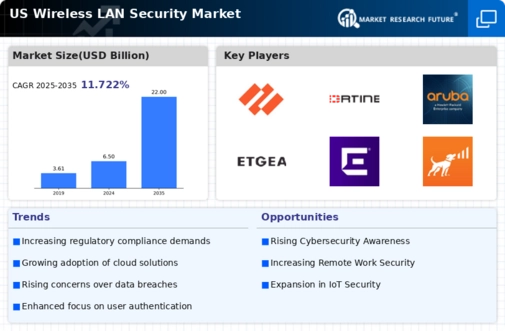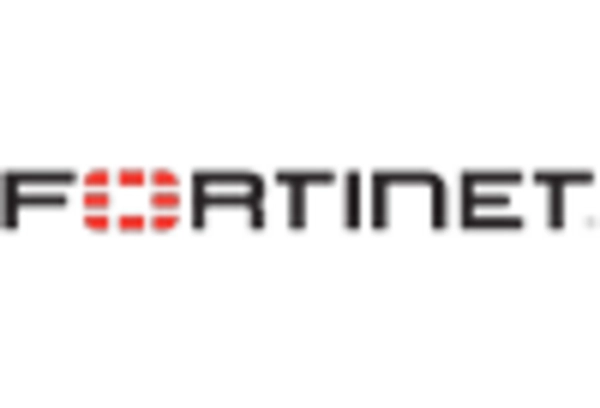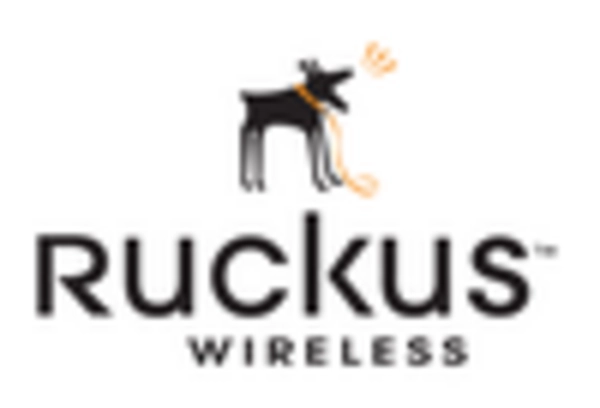The wireless lan-security market in the US is characterized by a dynamic competitive landscape, driven by the increasing demand for secure and reliable network solutions. Key players such as Cisco Systems (US), Fortinet (US), and Palo Alto Networks (US) are at the forefront, each adopting distinct strategies to enhance their market positioning. Cisco Systems (US) focuses on innovation through continuous development of advanced security features integrated into its networking solutions, while Fortinet (US) emphasizes a comprehensive security fabric that combines various security functions into a single platform. Palo Alto Networks (US) is leveraging its expertise in AI and machine learning to enhance threat detection and response capabilities, thereby shaping a competitive environment that prioritizes technological advancement and integrated solutions.
In terms of business tactics, companies are increasingly localizing manufacturing and optimizing supply chains to enhance operational efficiency and responsiveness to market demands. The market structure appears moderately fragmented, with several players competing for market share. However, the collective influence of major companies like Cisco Systems (US) and Fortinet (US) suggests a trend towards consolidation, as these firms seek to expand their reach and capabilities through strategic partnerships and acquisitions.
In October 2025, Cisco Systems (US) announced a strategic partnership with a leading cloud service provider to enhance its security offerings in cloud environments. This collaboration is expected to bolster Cisco's position in the rapidly growing cloud security segment, allowing it to provide more robust solutions to its clients. The strategic importance of this partnership lies in its potential to address the increasing security challenges associated with cloud adoption, thereby positioning Cisco as a leader in this critical area.
In September 2025, Fortinet (US) launched a new line of security appliances designed specifically for small and medium-sized enterprises (SMEs). This move is significant as it allows Fortinet to tap into a previously underserved market segment, potentially increasing its customer base and revenue streams. By offering tailored solutions for SMEs, Fortinet demonstrates its commitment to providing accessible security solutions, which could enhance its competitive edge in the market.
In August 2025, Palo Alto Networks (US) unveiled an innovative AI-driven threat detection system that promises to reduce response times to security incidents significantly. This development is crucial as it aligns with the growing trend of integrating AI into security solutions, enabling organizations to respond more effectively to evolving threats. The introduction of this system not only strengthens Palo Alto's product portfolio but also reinforces its reputation as a leader in cybersecurity innovation.
As of November 2025, the competitive trends in the wireless lan-security market are increasingly defined by digitalization, sustainability, and the integration of AI technologies. Strategic alliances are playing a pivotal role in shaping the landscape, as companies collaborate to enhance their technological capabilities and market reach. Looking ahead, competitive differentiation is likely to evolve from traditional price-based competition towards a focus on innovation, technology, and supply chain reliability. This shift underscores the importance of developing advanced solutions that meet the complex security needs of organizations in an increasingly digital world.

















Leave a Comment